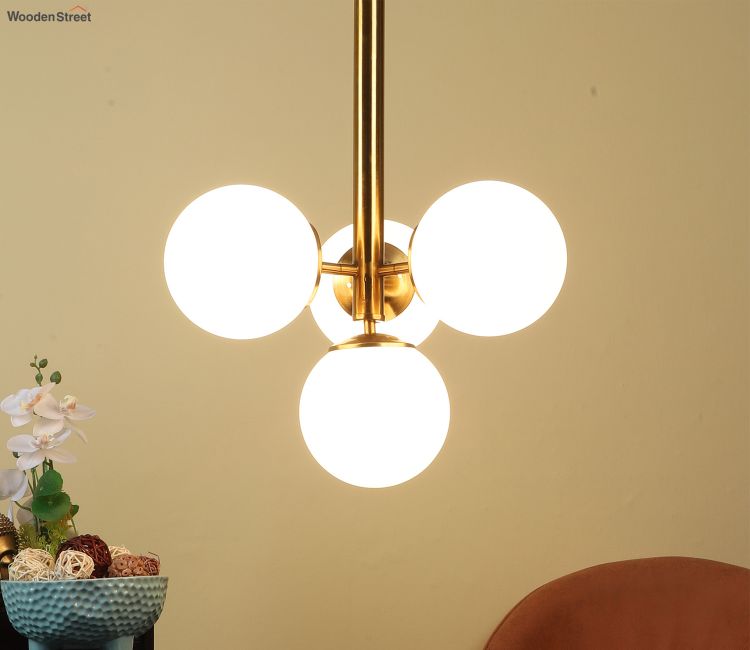
A chandelier is more than just a lighting fixture; it is a statement piece that enhances the beauty of your home. Whether you’re looking to add elegance to your dining area, create a cozy ambiance in your bedroom, or install a grand focal point in your entryway, choosing the perfect chandelier requires careful consideration. This guide will help you select the ideal chandelier for your space based on size, style, placement, and lighting needs.
1. Determine the Right Size
Choosing the right size is crucial to ensuring your chandelier complements the space without overwhelming it. Consider the following factors:
Room Size and Chandelier Dimensions
- Measure the length and width of your room in feet and add them together. The sum in inches should be the ideal diameter of your chandelier. For example, a 12×14 feet room would require a 26-inch wide chandelier.
- For dining tables, the chandelier should be about 12 inches narrower than the table’s width and positioned centrally.
- In open spaces, such as living rooms or foyers, ensure the chandelier is large enough to make an impact but not so big that it overpowers the room.
2. Choose a Style That Complements Your Decor
Chandeliers come in a variety of designs, from traditional to modern, rustic to industrial. Select a style that enhances your existing decor:
- Traditional Chandeliers – Feature intricate designs, crystal embellishments, and candle-like lights.
- Modern Chandeliers – Sleek lines, geometric shapes, and minimalist aesthetics.
- Rustic Chandeliers – Made from wood, wrought iron, or antlers, giving a farmhouse feel.
- Industrial Chandeliers – Incorporate metal finishes, exposed bulbs, and bold structures.
- Bohemian Chandeliers – Feature natural materials like beads, rattan, and fabric for a laid-back look.
3. Consider the Placement and Hanging Height
Proper placement ensures functionality and aesthetic appeal. Here are key placement tips:
Living Room
- When installing a chandelier for living room, position it at the center of the room or above a key piece of furniture like a coffee table.
- The bottom of the chandelier should be at least 7 feet from the floor to prevent obstruction.
Dining Room
- Hang the chandelier 30 to 36 inches above the dining table.
- Ensure it aligns with the table’s shape for a balanced look.
Bedroom
- Install at least 7 feet above the floor or at the center of the room.
- A dimmable option is recommended for adjusting the ambiance.
Entryway or Foyer
- Place the chandelier centrally for a welcoming statement.
- Ensure it hangs at least 7 feet from the floor or higher in double-height spaces.
4. Select the Right Lighting Type
The type of light your chandelier provides can set the mood and functionality of your space. Consider the following lighting types:
- Ambient Lighting – Provides general illumination and is ideal for large rooms.
- Task Lighting – Focuses on specific areas, such as dining tables or kitchen islands.
- Accent Lighting – Highlights architectural features or artwork.
Opt for dimmable chandeliers to control brightness levels and create the desired ambiance.
5. Choose the Right Bulbs and Wattage
The type of bulbs you use can impact energy efficiency and the overall look of your chandelier:
- LED Bulbs – Energy-efficient, long-lasting, and available in various color temperatures.
- Edison Bulbs – Ideal for vintage and industrial chandeliers.
- Candle Bulbs – Mimic traditional candlelight and enhance elegance.
- Smart Bulbs – Allow remote control and color adjustment for customizable lighting.
Ensure the total wattage provides adequate illumination for the space. For example, a 200-400 square foot room may require a chandelier with a total of 2000-4000 lumens.
6. Consider Maintenance and Cleaning
Chandeliers require regular maintenance to keep them looking beautiful. Here are some tips:
- Choose a chandelier with easily accessible parts for easy cleaning.
- Use a microfiber cloth or a special chandelier cleaner for dust removal.
- Clean crystals and glass elements periodically to maintain their shine.
- Consider fixtures with fewer intricate details for easier upkeep.
7. Ensure Proper Installation
Proper installation is key to safety and functionality. Keep these points in mind:
- Always use a sturdy ceiling mount that can support the weight of the chandelier.
- Hire a professional electrician for wiring and secure installation.
- If installing in a high-ceiling room, consider a chain or rod to adjust the hanging height.
8. Balance Your Budget
Chandeliers come in a wide price range, from budget-friendly options to high-end designer pieces. Determine your budget beforehand and consider:
- Material Quality – Crystal, glass, and metal finishes can affect price and durability.
- Brand and Designer Labels – High-end brands may offer exclusive designs and superior craftsmanship.
- Energy Efficiency – LED chandeliers may cost more initially but save money in the long run.
Conclusion
Choosing the perfect chandelier requires balancing size, style, placement, lighting type, and budget. Whether you’re selecting a chandelier for living room, dining area, or entryway, ensure it complements your decor while providing functional lighting. With the right selection, your chandelier can become a stunning focal point that enhances the beauty and ambiance of your home.